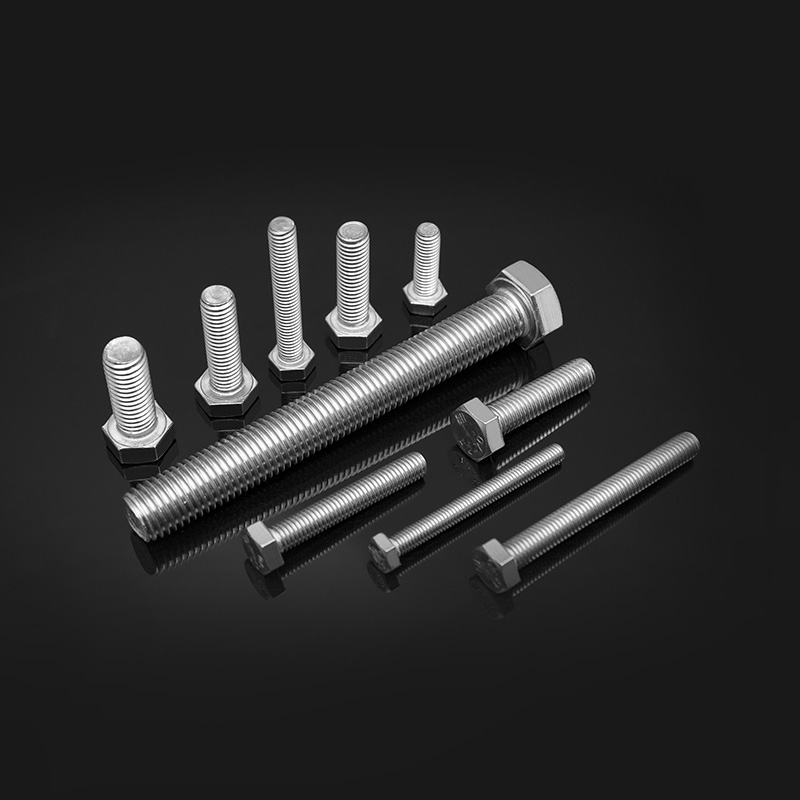+86 189 6101 2359
+86 133 6521 5663
+86 138 5268 6835
In an era where infrastructure durability and material reliability are paramount, stainless steel bolts have emerged as critical components across industries—from skyscraper construction to aerospace engineering. These corrosion-resistant fasteners are experiencing unprecedented demand as global infrastructure projects expand and industries prioritize longevity over short-term savings.
Content
Modern stainless steel bolts represent a triumph of metallurgical engineering, typically manufactured from three principal alloy groups:
Austenitic Grades (304/316)
Contains 18-20% chromium and 8-12% nickel
Excellent corrosion resistance
Non-magnetic properties
Accounts for 60% of industrial bolt applications
Martensitic Grades (410/420)
Higher carbon content (0.15-1.2%)
Heat-treatable for increased strength
Common in high-stress automotive applications
Duplex Grades (2205)
Combined austenitic/ferritic structure
Twice the yield strength of 304 stainless
Superior stress corrosion cracking resistance
Advanced manufacturing techniques now achieve tensile strengths exceeding 1,000 MPa while maintaining essential corrosion resistance properties—a balance previously unattainable in fastener technology.
Construction Boom
The global construction sector (projected to reach $15.2 trillion by 2030) increasingly specifies stainless fasteners for:
Seawall and bridge constructions
High-rise building frameworks
Modular construction systems
Energy Sector Expansion
Offshore wind turbine installations (316L bolts resistant to saltwater)
Solar farm mounting systems
Nuclear power plant containment structures
Transportation Evolution
Lightweighting initiatives in automotive (high-strength martensitic bolts)
Rail infrastructure corrosion management
Aerospace titanium-aluminum-stainless hybrid fasteners
Surface Engineering Breakthroughs
Passivation enhancements creating thicker chromium oxide layers
Electropolishing techniques reducing surface imperfections
PVD coatings adding color-coding without compromising corrosion resistance
Smart Fastener Development
RFID-embedded bolts for asset tracking
Strain-sensing bolts with integrated IoT capabilities
Temperature-indicating fasteners for critical applications
Manufacturing Advancements
AI-driven cold forging systems improving dimensional accuracy
Automated vision inspection achieving 0.01mm tolerance
Blockchain-enabled material traceability from mill to installation
The stainless fastener market faces unique challenges:
Material Cost Volatility
Nickel prices (critical for 300-series alloys) fluctuating 30% annually
Chrome supply chain disruptions affecting production
Geopolitical Factors
US/EU anti-dumping duties on certain stainless fasteners
China's dominance in mid-range fastener production
India emerging as quality alternative manufacturing hub
Logistical Innovations
Vendor-managed inventory systems for just-in-time delivery
Containerized fastener kits for mega-projects
Digital twin technology for fastener lifecycle management
The stainless steel bolt industry is pioneering green manufacturing:
Recycling Infrastructure
90% of stainless steel is recyclable
Closed-loop systems in European fastener plants
Longevity Advantages
50+ year service life vs. 5-7 years for coated carbon steel
Dramatically reduced replacement/maintenance costs
Clean Production
Solar-powered bolt manufacturing facilities
Waterless cleaning systems
Hydrogen-based annealing processes
Engineering teams must consider:
Environmental Factors
Chloride exposure (marine/coastal) requiring 316/L
Temperature extremes affecting material performance
Chemical exposure risks
Mechanical Requirements
Vibration resistance (prevailing torque nuts)
Fatigue life expectations
Galvanic corrosion risks with dissimilar metals
Certification Standards
ASTM A193/A320 for high-temperature service
EN ISO 3506 for European markets
NORSOK M-1 for offshore applications
The next decade will witness:
Material Science Innovations
High-entropy alloy fasteners for extreme environments
Graphene-enhanced stainless formulations
Self-healing oxide layer technologies
Digital Transformation
AR-assisted bolt installation/maintenance
Digital product passports for every fastener
AI-powered corrosion prediction models
Market Expansion
Space infrastructure fastener requirements
Deep-sea mining equipment demands
Next-gen nuclear reactor constructions
Stainless steel bolts have evolved from simple mechanical components to engineered solutions addressing some of industry's most pressing challenges—from corrosion management to smart infrastructure development. As global megatrends like urbanization, energy transition, and sustainability accelerate, these unassuming fasteners will play an increasingly vital role in building the resilient infrastructure of tomorrow.
Leading manufacturers are responding with unprecedented investments in R&D, with several major players now offering complete engineered fastener systems—including digital twins, installation robotics, and lifetime performance guarantees—that redefine what's possible in joining technology.
For specifiers and engineers, understanding the full capabilities of modern stainless steel fasteners has become not just a matter of product selection, but a strategic consideration in project planning and lifecycle costing. In our interconnected world, the humble bolt has become both a technological marvel and a critical enabler of progress.

ThreadTolerance: 6gstandardDIN 13-15、DIN 13-12Rod diameter dd≤M20:A2-70、A4-70;M20<d≤M39:A2-50、A4-50;d≥M39:C3、C4;d<M39
See DetailsCopyright © Jiangsu Huajie Stainless Steel Products Co., Ltd. All Rights Reserved.
Stainless Steel Fasteners Manufacturers